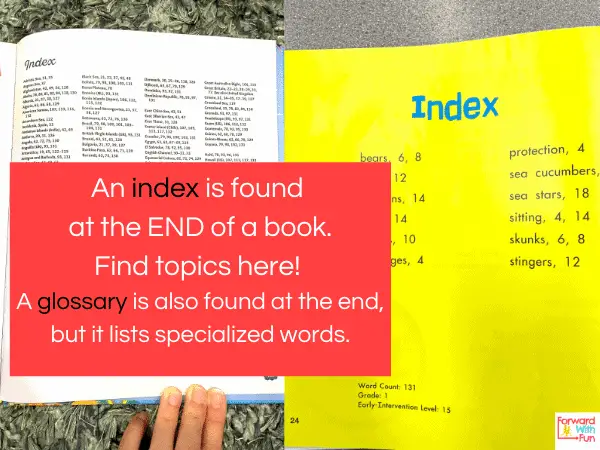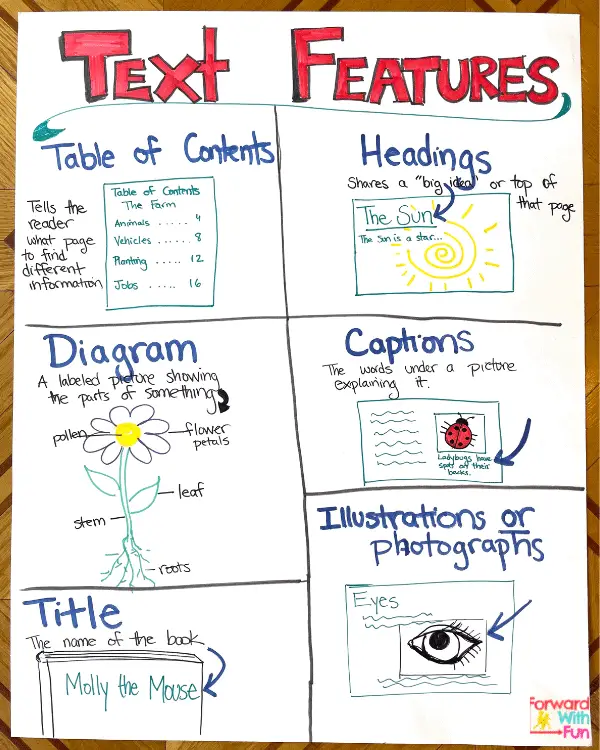
Text features are all the parts of a text that are not the main text itself. They include title, headings, captions, pictures, diagrams, table of contents, glossary, and more.
You can find text features in both fiction and nonfiction texts but are more common in nonfiction text.
On the cover of each book is our first text feature, the title. The title of a text can be found in both fiction and nonfiction texts. The title tells you what the text will be about before even opening it. Titles are sometimes called headers or headings as well. Don't let those terms confuse you!

Knowing the parts of a book including the where we can find the front and back cover along with the title is part of a set of early reading skills called concepts of print.
In kindergarten teachers teach that the title page shares the title of the book, but instead of being on the cover, it has it's own page.
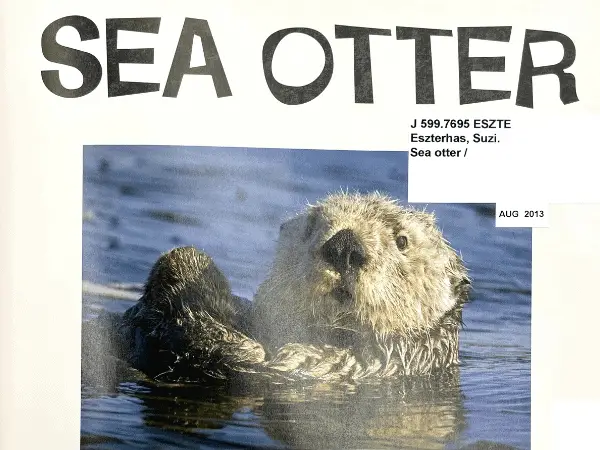
A table of contents precedes the story or main content of a book and can be found in nonfiction as well as fictional texts. We use the table of contents to view a list of what is included in that book/magazine and what page we can find it on!
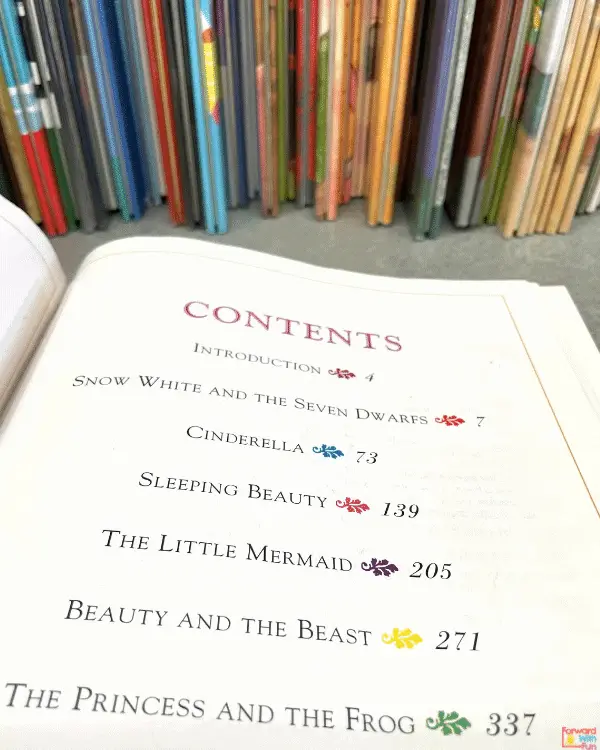
A diagram is a picture with labels and can be found in both fiction and nonfiction books as well as textbooks. It serves to give the reader more detail about the picture.
In kindergarten, children often learn to write by first labeling pictures that they draw with one or two words. Seeing diagrams in mentor texts helps kids with their own labeling. Creating diagrams also gives children a way to practice writing without having to write full sentences. Kids are often excited to create diagrams of their favorite things, to demonstrate their expert knowledge about preferred things such as princesses, construction vehicles, flowers, etc.

Photographs are found in nonfiction texts and are taken with a camera to show what something actually looks like. They're often accompanied by captions or sometimes labels like a diagram.
A caption explains or describes an image found on the page. Captions are most often seen with pictures, charts or graphs. In many children's nonfiction texts the caption can be a "Did you know?" fact or just gives a bit more detail about the picture. See the next graphic for an example.
These can be chapter names in fictional stories but are more commonly used in nonfiction text. Much like the title, a heading will tell you what the next page(s) will be about.
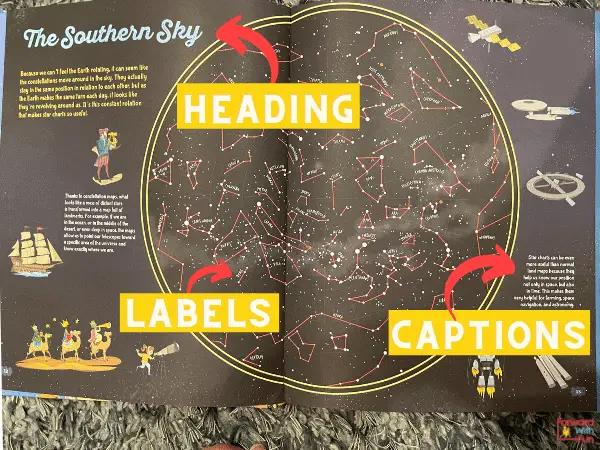
Some texts may include other text features like glossary, sidebars, timelines, maps, index charts etc., while others do not have any. Though we might see some of these in kindergarten, they're more a focus for older grades.
